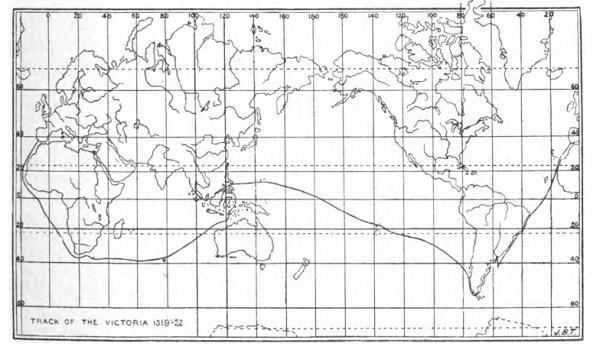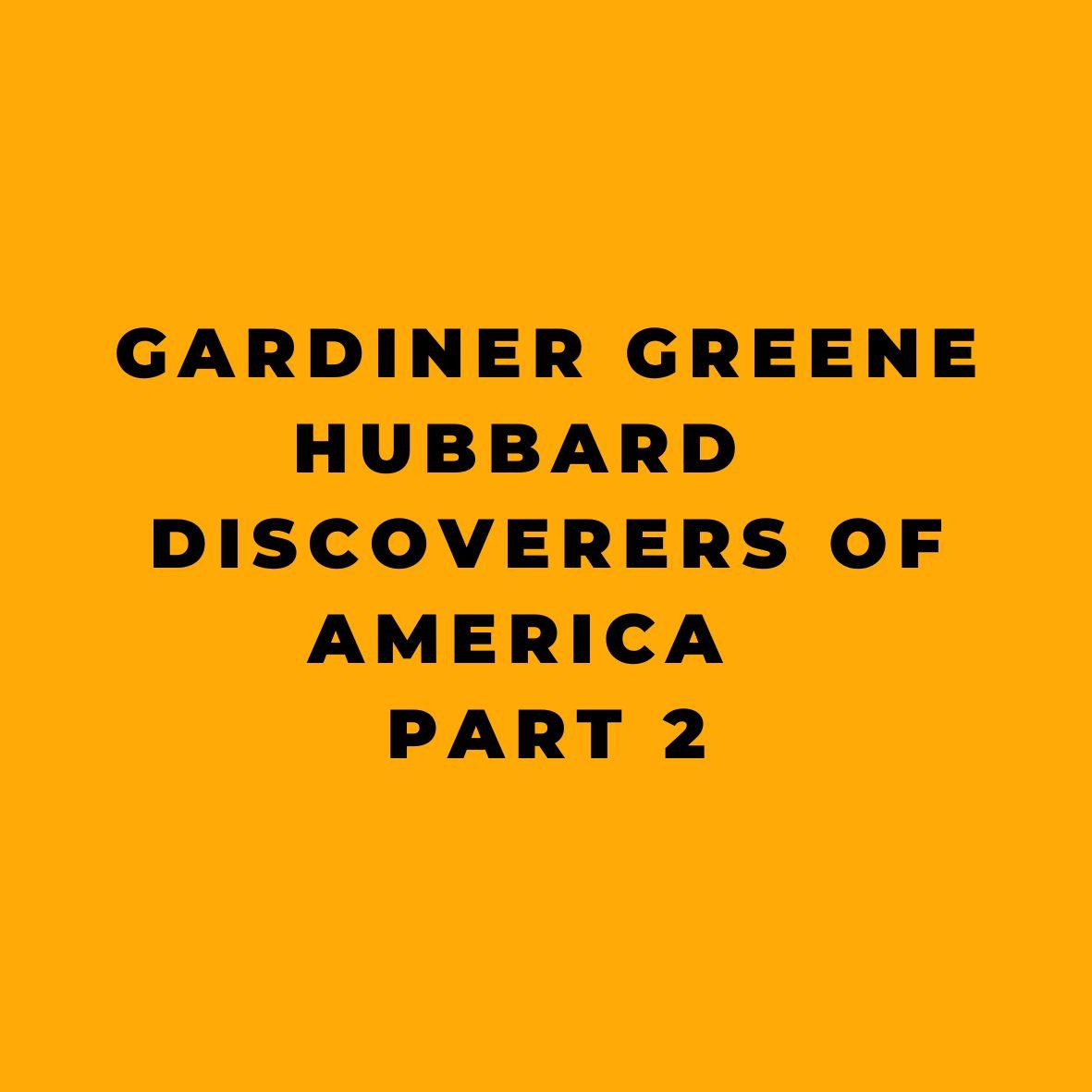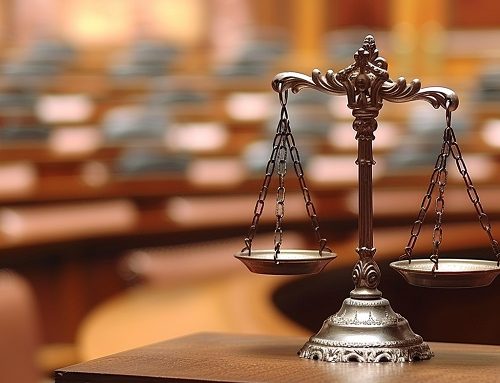DISCOVERERS OF AMERICA – ANNUAL ADDRESS BY THE PRESIDENT – HON GARDINER GREENE HUBBARD
(Presented before the Society January 13, 1893)
This is Part 2 of 4.
Part 1, Part 2, Part 3, Part 4
In Portugal, Prince Henry the Navigator was making those voyages to the coast of Africa for discovery and trade which made Portugal for one hundred and fifty years the greatest maritime nation of the world. Each year these expeditions sailed further and further southward, passing the Gold coast, the equator, the river Congo. They sailed out into the ocean and rediscovered the Azores, Madeira and the Canary islands, formerly known to the Phenicians. In 1442 their ships brought home African negroes to be sold as slaves in Lisbon, the beginning of the African slave trade. In 1486 Diaz rounded the southern extremity of Africa and called it the Stormy cape, though Prince Henry named it the cape of Good Hope. Greater discoveries were made during the lives of men contemporary with Columbus than in all times previous or subsequent.
Columbus is for us the principal figure in this new world. He was born in Italy about 1446, though we know with certainty neither the place nor time of his birth and but little of his early life. He followed the sea for many years, sailing to Africa, England, and probably Iceland. About the year 1470 he is found in Portugal, where some say he was shipwrecked on the coast while on a piratical voyage. Here he married a Portuguese lady, whose father had been governor of one of the islands off the coast of Africa; and there he resided for several years, making maps and pursuing those studies which fitted him for his great voyage of discovery. He knew that the spices from the islands of the Indian ocean, the silks, diamonds and pearls of India, were carried by the Arabs through the Red sea or up the Euphrates in boats and thence by caravans to the Mediterranean and Black seas, where they were exchanged with the merchants of Venice and Genoa for the goods of Europe.
He was convinced by the study of Marco Polo not only of the wealth of Cipango and Cathay and of the great trade between the Orient and the Mediterranean, but also of the possibility of reaching those countries and obtaining that trade for Spain by sailing west rather than by circumnavigating Africa. The actual distance from Europe in a due west line to Cipango is nearly twelve thousand miles ; Toscanelli estimated it as 100° or nearly five thousand miles, but his map showed islands on the route which would reduce the distance between any two lands to about 2,000 miles.*
Columbus was a devout Catholic, holding to the teachings of the church. In the book of Esdras he read that God on the third day of the creation made the earth, six parts of land and one-seventh water. He knew the vast extent of the Atlantic north and south, and reasoning from these facts he thought it could not be over 2,000 or 2,500 miles to Cipango, though he actually sailed 3,230 miles before he reached a new world.
After Columbus determined to cross the Atlantic, he applied for help to the king of Portugal. He wrote, “They took my charts and writings from me, saying they would ponder them, but secretly they sent out the ships they had denied me. God drove them back on their own coasts and punished their treachery, but I could no longer trust them.” He therefore left Portugal for Spain. Las Casas describes him at this time as a man of noble and commanding presence, tall and well-built, with a ruddy complexion, keen, blue-gray eyes that often kindled, while his waving white hair made him quite picturesque; his manner courteous and his conversation charming. He had an indefinable air of authority, as became a man of great heart and lofty thoughts. It was this commanding presence that enabled him to stand before Ferdinand and Isabella as their equal.
In 1484, he arrived in Spain as a foreigner, poor and in debt. A stranger and friendless, he appeared at the court of the proudest sovereigns of Europe. Yet, such was his bearing and the effect produced upon the king and queen by his eloquence that they appointed several learned men to consider his project. Some few believed, many remained in doubt, but most laughed at him as visionary and ridiculed his proposals as the dream of a madman. Those that were convinced by his reasoning became his firm friends. For seven years, he waited patiently at the court, renewing his suit from time to time, until Grenada was conquered, when Isabella had promised to listen to him. A man less confident, less in earnest, would have succumbed before the many difficulties and delays he encountered. Again he applied to Isabella, and she agreed to equip a fleet. Columbus demanded that he should be made high admiral of the western seas and viceroy and governor of all the continents and islands which might lie therein, and that he should receive one-eighth of the net profits from all trade with such countries. Isabella refused, but Columbus, knowing that the discovery of a new and shorter route to the Spice Islands would give Spain the control of their trade, and realizing the power and wealth that would accrue to the Spanish throne through such discovery, insisted on his demands, and for this great constancy and loftiness of soul, Las Casas commends him.
After this refusal, Columbus mounted his mule and started for France, but was soon recalled; he returned to the court, which agreed to his demands. A patent was granted appointing “Christopher Colon, as soon as he shall have discovered said islands or mainlands in the ocean sea, or any one of them, to be our admiral of the ocean sea, viceroy and governor, in the said islands or mainland: I the Queen; I the King.”
The fleet of Columbus consisted of three small vessels; the largest was a single-decked ship 90 feet long, the others with decks only in the stern and prow. His crew was 90 men. On August 6, 1492, they sailed from Palos, and on October 21 discovered the Indies. Columbus returned to Spain and appeared at the court of Isabella with his train of Indians bearing gold, silver, precious stones, and other products of the islands he had discovered. It was Cathay and the shorter route to the Indies he supposed he had found, though he did not find the cities and rich countries, the gold and silver, the pearls and jewels, that he sought. He thought these treasures lay further westward, and that he must find the straits of Malacca, and through them sail to the Spice islands and India, and for that purpose he sailed on his second voyage. After following the coast of Cuba 1,000 miles, believing he had found the continent of Asia, he returned to Spain.
Ferdinand and Isabella gave many persons the right to visit the newly discovered lands, as was their prerogative, but they also appointed governors over the land and water, contrary to their agreement with Columbus.
On his third voyage, in 1498, he reached South America, the first European to discover that continent. He found a large bay and thought he had reached the straits; but, alas, the waters were fresh—it was only the Orinoco river. He coasted for some distance along the shore of the Caribbean Sea still looking for the straits, and then set sail for Hispaniola (or Cuba), where he had left his brother as governor. On arriving, he found his brother deposed and imprisoned. Columbus himself was put in chains and sent home. The captain of the vessel offered to remove his chains, but he refused, saying that they had been put on by order of the king and could be removed only by him.
While Columbus was vainly searching in the new world for the Orient, Vasco de Gama found it for Portugal in 1497 by sailing around the cape of Good Hope and crossing the Indian ocean to India and the Spice islands. He returned to Lisbon bringing all manner of precious stones, silks, and satins, and spices of every kind. Columbus, for the time, was forgotten, and it was only after a long detention that he was permitted again to sail toward the western world.
On his fourth and last voyage, Columbus landed at Honduras, followed the coast of Nicaragua and the isthmus of Panama, and then sailed along the Caribbean sea vainly searching for the straits that would lead him to the promised land.
On his return from this voyage, the queen, his friend, was dead, and the last eighteen months of his life were spent in poverty and sickness at Valladolid, where he died in 1506, so little known that the local records of the city, which give many insignificant details, make no mention of his death.
After Columbus had opened the way, it was easy for other navigators to follow where he had led. Two other Italians, John Cabot and Sebastian, his son, sailed from England in 1497, nearly due westward for Cathay. They discovered Newfoundland and sailed thence northeastward along the coast of Labrador and were probably the first discoverers of the continent of America. The next year they made another voyage to Newfoundland, and then followed the coast of North America southward, probably reaching the Carolinas. These voyagers, still seeking Cathay and the Spice islands, cared little for a land of hills and rocks, where neither gold nor silver was found. Two generations passed before we hear of any further English expeditions to the new world.
The most noted of the followers of Columbus was Americus Vespucius, like Columbus and the Cabots, an Italian. A pilot of great reputation, sailing in the service of Portugal. In 1497, he sailed around the Gulf of Mexico, Honduras, Mexico, and Florida, and thence along the coast of North America nearly to Chesapeake Bay.
On another voyage, he sailed to South America, reaching it a little north of Cape Saint Roque. He followed the coast nearly to the mouth of the Rio de la Plata, taking possession of the country for the king of Portugal.
Vespucius knew that this country was south of every part of Asia, and therefore could not be a part of the world as then known; he realized that he had discovered a “new world.” An account of this voyage was published in German, Italian and French, with the title in the French edition, “Novus Mundus.” In a map published in 1514, it was called “America.” Thus, the name of Americus Vespucius was given to the new world, and he received the honor due to Columbus. It was said that “Columbus had discovered new islands, Vespucius a new world” – that world already discovered by the Northmen, then by Columbus, the third time by Cabot, and now by Americus Vespucius.
After Columbus, Magellan was the greatest of the discoverers of America. Born of a noble Portuguese family, he early entered the naval service and sailed to India, where for seven years he was employed on land and on sea in laying the foundation of the Portuguese empire. He gained a great reputation for his services and returned to Lisbon. Disappointed in an application to the king of Portugal, he went to Spain, where Charles V gladly received him and gave him the command of a fleet of five vessels, in which he set sail for India and the Spice islands. Magellan, like Columbus and Vespucius, hoped to find a way to India through some strait dividing South America, or failing in that, by sailing around the mainland.
He left Spain in 1518 for Brazil, sailing then southwardly along the coast to about 50° south, where he spent the winter. Three of his captains became discouraged, mutinied and determined to return. Magellan heard of their treachery. He summoned the leader to his vessel. On his refusal to obey, the officer bearing the summons plunged a dagger into the heart of the mutineer; at the same moment a boat’s crew from Magellan’s vessel mounted the deck, and the mutiny was over. The other mutineers were either hung or left to perish on the coast of Patagonia.

FIGURE 1. —Magellan’s Circumnavigation.
Early in the spring of 1519 the fleet set out again, one vessel having been shipwrecked, and found a channel which proved to be the long-sought passage to India. Three months were spent in exploring the straits of Magellan before they entered the Pacific ocean. One of the vessels sent to explore a channel in the straits deserted and returned to Spain.
They sailed along the coast of Patagonia 400 or 500 miles, and then northeastward toward Cathay and the Spice islands. The wind was light, the ocean was as calm and smooth as an inland sea, and they called it the Pacific ocean. For months their progress was slow; their food failed; scurvy and sickness broke out.
This is Part 2 of 4.
Part 1, Part 2, Part 3, Part 4
References:
- Hubbard, Gardiner Greene. Discoverers of America: Annual Address by the President, Hon. Gardiner G. Hubbard. National Geographic Society, 1893.










